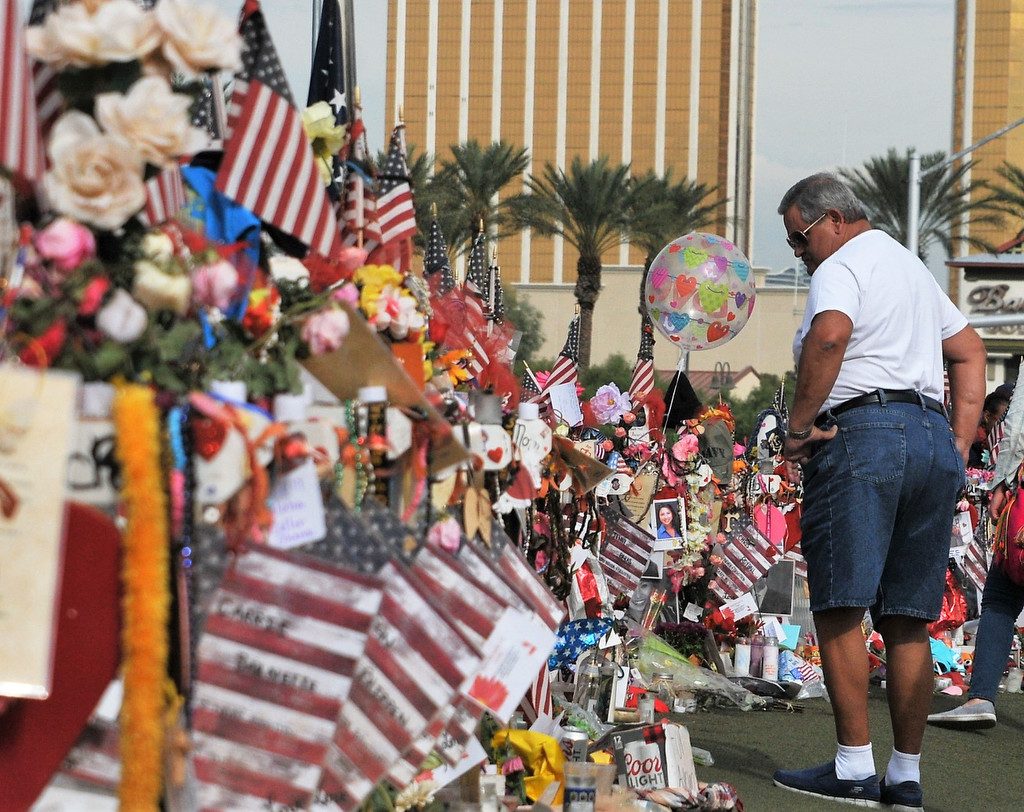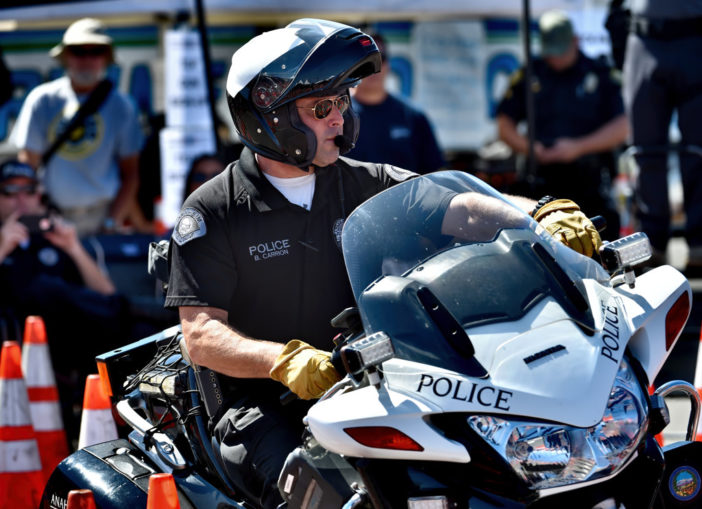2017 has been a busy year for law enforcement. A lot of things have happened, but here is a recap of what I believe were the top issues over the last year.
The tide appears to be changing when it comes to police vilification.
Protests targeting police agencies have lost momentum. There may be many reasons. Changes in administration and anger fatigue are just a couple explanations. The assassination of police officers in Dallas, Baton Rouge, and New York City has also caused thoughtful reflection.
Then again, people may actually be beginning to recognize police officers don’t use force just because they want to. Because of body cameras and more transparency, the public is getting better at understanding that the use of force is dictated by suspect behavior, especially when it seems compliance would have gone a long way.

People hold signs in front of Anaheim City Hall during a rally. File photo by Steven Georges/Behind the Badge OC
The courts understand the difficult job police officers have.
Prosecutors have brought cases to trial when they feel a jury needs to pass judgement on a police officer’s use of force. There have been few convictions. After hearing all the evidence, juries in Baltimore, Ohio, and other states have concluded that officers used reasonable force given the circumstances they found themselves in.
That doesn’t mean there weren’t cases where officers behavior was, in fact, criminal. The conviction of former Officer Michael Slager in South Carolina comes to mind. After watching the video in 2015, I thought it looked really bad. His guilty plea confirmed what appeared to be an unnecessary use of deadly force. Police officers across the board agreed with the outcome.
The ability of one person to cause extreme carnage is a fact of life.
Police are still reeling from mass shootings in Las Vegas, NV, Sutherland Springs, TX, and Rancho Tehama, CA. The Las Vegas shooting was incredulous in its scope and sheer carnage. In each case, law enforcement officers responded courageously but still not quick enough to prevent people from dying.
According to the Gun Violence Archive as of December 20, 2017, 333 mass shootings have occurred in the United States. There is no doubt in anyone’s mind there will be more.

A row of 58 crosses, each representing a victim of the mass shooting in Las Vegas on Oct. 1, has become smothered with messages of condolence and mementos from around the world. The crosses are placed at the “Welcome to Fabulous Las Vegas” sign, on Las Vegas Boulevard. File photo by Lou Ponsi/Behind the Badge OC
The world is feeling less safe.
Terrorism is still a threat on everyone’s mind. 2017 brought to light a new terrorist weapon: the automobile. Attacks with automobiles occurred in England, France, and Denmark this past year. A terrorist attack in New York killed eight people and injured 12 more.
Sidewalks now have to be rethought and hardened to deal with the threat.
The issues related to homelessness have put police departments in a no-win situation.
Across the country, issues related to homelessness have caused consternation for police departments. Departments have deployed specialized teams of officers, collaborated with service providers, and coordinated resources. As communities feel less safe, they often blame the police for inaction. If the police take action, advocates paint them as uncaring and draconian. There is no cookie cutter answer. Police officers are just stuck in the middle.
Setting thousands of prisoners free seemed like such a good idea at the time.
In an effort to alleviate jail overcrowding, thousands of prisoners were set free. People are beginning to realize this may have not been the best solution when it comes to public safety. Police officers point to the real-time observation of serial re-offenders and increases in crime. Researchers say it’s too soon to pass judgement because the data is still being compiled, which is a process that takes years.
In the meantime, the guy who just stole packages off your front porch gets a citation. It just doesn’t seem like justice at all.
Police departments can’t seem to hire good people fast enough.
Across the country, law enforcement agencies are struggling to hire people. After years of recession and budget cuts, departments are now trying to make up ground. It’s not an easy task. Thousands of officers are retiring and there is a shortage of good applicants. Add to that the fact departments are all fishing in the same pond for applicants. This has resulted in challenges with vetting out, processing, and training the new cadre of officers. It will take years to make up ground.
Body cameras have now become standard practice for most police departments.
Hundreds of police departments across the country have now deployed body cameras. The cameras are largely accepted by officers. It seems the vast majority of the time the cameras are capturing people’s misbehavior. They have also captured dramatic life-and-death decisions officers have to make every day.
A study out of Washington, D.C., that reviewed thousands of police contacts came to the conclusion the presence of the cameras was not “statistically significant” in changing officer behavior. Seems the vast majority of the officers were doing a good job to begin with.
Body cameras are now a public expectation and are here to stay.
Police departments are embracing social media in a big way.
A few years ago, police departments were reticent to jump into social media. Those that have reaped huge benefits. An active social media presence has connected agencies with their communities, providing relevant information most of us want to know.
Facebook postings of wanted persons and surveillance video of the latest porch pirate seem to be especially popular. During disasters such as fires and floods social media has provided a platform for relaying vital communications when 911 systems go out.
For some agencies, these sites provide not only relevant information but have entertainment value as well. There will always be dumb crook stories.
Joe is a retired Anaheim Police Department captain. You can reach him at jvargas@behindthebadgeoc.com.
 Behind the Badge
Behind the Badge




